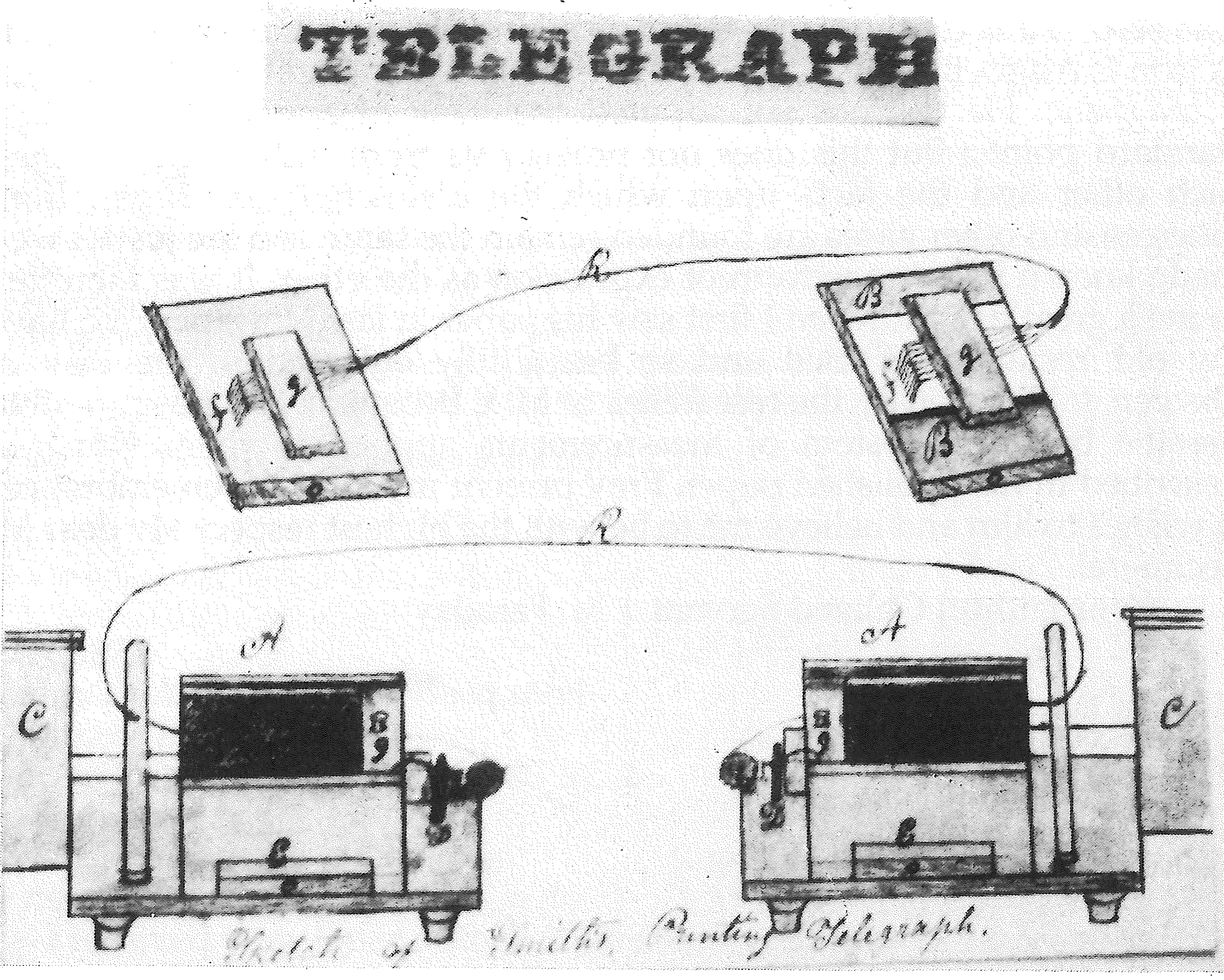R. Smith to Faraday 25 January 18511
Blackford Perthshire | 25 January 1851
Honoured | Sir
I hope that you will excuse the liberty I have taken in troubling you with this communication, I have enclosed a sketch and short description of a telegraph which I have in progress, & would consider it a great favour, acquisition and honour were you to have the kindness to give me your opinion in regard to this kind of telegraph, I sent a description of it to Mr Clark2 engineer to the London telegraph company, he returned the paper with the following remark “I have no doubt that your ingenious telegraph will work well on short lines, but for long distances it is my opinion that it will not do so well”. I do not see why it would not work on long lines as well as short ones. I have the honour to be
revered | Sir | Your most | obedient servant | R. Smith
Prof. Faraday | Royal Institution | London

Description of Smiths New Electro Printing Telegraph,
This kind of Telegraph is so constructed that the same instrument both communicates and indicates. One of the instruments A.A. is placed at each station on the line, a communication is set up with types as f. and placed upon the board Fig. 1. and pute into the gro[o]ve E. of the instrument at one station. And a sheet of papir [sic] which is keept constantly wet with a solution of ferro-cyanide of potassium, to which has been added a few drops of Nitric Acid is laid upon the lead block B.B. Fig 2, and pute [sic] into E of one of the instrument at a distant station, The cathode electrode of the Voltaic battery communicates with the leaden black, and the anode with the types. The slides g.g. carries the opposite ends of a number of wires insulated and placed together in the form of a rope, and which passes along the line C.C. is boxes containing clock work, or a system of pulleys D.D. an electro-magnet connected with the battery. As soon as the electric circuit is Formed, the guard is attracted by the magnets the motion of which lifts a small lever which holds the slides containing the wires and as soon as the electro-magnet liberates the slides, the clock-work or the arrangement of pulleys moves the slides in the gro[o]ves of the instrument at the same time. When the wires are in contact with the surface of the types the electricity passes along to the other instruments containing the moistened paper. Consequently the ferro-cyanide of potassium is decomposed, the acid attacks the iron, and cyanurate of iron is formed, which produces blue lines upon the paper, but when the points of the wires are not in contact with the types the electric current is interrupted and the points ceases to mark so that a positive copy or impression of the types is produced upon the paper. Instead of the types a message may be written upon paper with a kind of metallic ink, and which may be transmitted in the same way. As soon as the wires passes over the types and paper the motion is reversed, the Slides are taken back to there [sic] former position, the boards E.E. are then drawn out till a new surface of the types and paper is presented to the wires, and which is regulated by means of a scale, the circuit is again closed, and the machine operates as before, and so on, till the whole of the message is printed. Any number of wires may be used from one to fifty, and all intermediate. Stations may be supplied with branch wires in the usual way. In order to return an answer to a communication a board with a leaden block and paper is placed into the instrument where the types were, and of course types or hand writing into the other, and the electric current reversed.
The specimen sent3 was produced by a small coursely constructed model, in the presence of Lord Berriedale4 and Captain Duncan5[.]
R. Smith
Please cite as “Faraday2374,” in Ɛpsilon: The Michael Faraday Collection accessed on 28 April 2024, https://epsilon.ac.uk/view/faraday/letters/Faraday2374